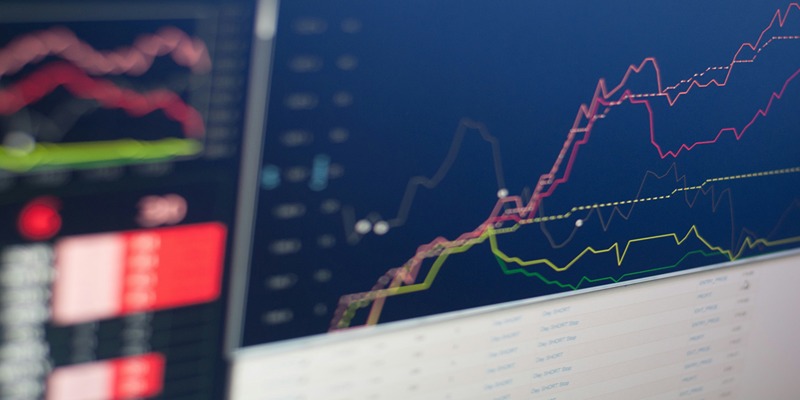How to Find the Best Stocks For Share Buybacks?
Susan Kelly
Nov 28, 2023
Share repurchases or stock buybacks are cases when a company buys back its own shares from the marketplace and hence decreases the amount of outstanding shares. It is financial strategy which can have significant influence on stocks by improving the shareholder's wealth. The most common economic purpose of a stock buyback is to increase the earnings per share (EPS) ratio, a measure of a company’s profitability. Depending on how well the company does this, it usually improves investor perception, and sometimes causes the stock price to rise as a result. Furthermore, buybacks depict management’s faith in their organization's monetary state, and the investors get the message that the company is undervalued or has extra cash to give back to shareholders.

Understanding Share Buybacks and Market Performance
Share buybacks are a pivotal financial strategy that can significantly influence market performance and shareholder value. Understanding the mechanics of how buybacks work and their impact on the market is crucial for investors looking to capitalize on these movements. Companies may choose to repurchase shares for several reasons, each impacting investor perception and market dynamics differently. By analyzing why companies engage in buybacks and how these actions affect stock prices, investors can better navigate their investment strategies in response to these events.
Basics of Share Buybacks
A share buyback occurs when a company decides to repurchase its own shares from the open market. This action reduces the total number of outstanding shares, making each remaining share represent a larger percentage of ownership in the company. Companies often undertake buybacks to utilize excess cash in a way that benefits shareholders, to consolidate ownership, increase financial ratios like earnings per share (EPS), and improve investor confidence. By reducing the supply of available shares, buybacks can also support the share price during market downturns or when the company feels its shares are undervalued by the market.
Reviewing the Top Buyback Stocks of 2024
As we progress through 2024, certain companies have distinguished themselves by implementing substantial share buyback programs, effectively enhancing shareholder yield. This section reviews these top performers, analyzing how their buyback strategies have contributed to their market performance and offering insight into the potential future benefits for investors.
Leading Companies with Significant Buybacks
Tractor Supply (TSCO) - With a shareholder yield of 3.9%, Tractor Supply has demonstrated a strong commitment to returning value to its shareholders through robust buyback programs. The company's strategic buybacks have supported a steady increase in stock prices by tightening the supply of shares and enhancing earnings per share.
UnitedHealth Group (UNH) - At a 3.3% shareholder yield, UnitedHealth has actively engaged in share repurchases, reflecting its strong financial health and confidence in continued growth. These buybacks have played a key role in maintaining stock price stability and attracting long-term investors.
Alphabet (GOOGL) - Alphabet’s shareholder yield of 3.2% is indicative of its aggressive strategy to repurchase shares, underscoring a bullish outlook by its management regarding future growth and profitability.
WR Berkley (WRB) and Accenture (ACN) - Both companies offer a shareholder yield of 2.9%, utilizing buybacks as a tool to manage capital allocation efficiently and maximize shareholder returns.
Mastercard (MA) and ExlService Holdings (EXLS) - Each with a shareholder yield of 2.6%, these companies have consistently used buybacks to reduce equity float and increase stock valuation, benefiting from enhanced market perceptions of their financial management.
Marsh & McLennan (MMC) - With a yield of 2.3%, MMC's buyback program has contributed to its reputation as a financially sound investment, capable of sustaining growth and shareholder value over time.
Intuit (INTU) - A lower yield of 1.8% still reflects a positive use of buybacks to support Intuit’s stock price, especially during market downturns, enhancing investor confidence through demonstrated financial strength.
Cadence Design Systems (CDNS) - Though at the lower end with a 0.8% shareholder yield, Cadence’s strategic buybacks show a careful approach to stock management and capital distribution, aimed at long-term value creation.

Impact on Stock Performance
The impact of these buyback programs across different companies has generally resulted in increased stock prices and shareholder value. Companies like Tractor Supply and UnitedHealth have seen their market performance stabilize and grow as a direct result of these buybacks. The strategic reduction in share count not only boosts EPS but also sends a strong signal to the market about the company's financial health and future prospects. This strategic approach has allowed these companies to maintain a competitive edge in the stock market, making them attractive to both new investors and long-term shareholders looking for reliable returns.
Financial Health and Buybacks
The financial health of a company is a critical factor when considering the initiation and sustainability of share buybacks. Strong financial indicators not only support the feasibility of buybacks but also reassure investors about the company's capability to enhance shareholder value without compromising its growth or operational needs. Evaluating the financial metrics that signal a company as a good candidate for buybacks, along with understanding the associated risks, is essential for investors looking to benefit from such strategies.
Indicators of Strong Buyback Candidates
A company that is a strong candidate for buybacks typically exhibits several key financial metrics: high free cash flow, low debt levels, and stable earnings growth. High free cash flow indicates that the company has enough liquidity to fund buybacks without needing to borrow or sacrifice investment in core business activities. Low debt levels ensure that the company is not under significant financial strain, which could be exacerbated by spending cash on buybacks. Stable or increasing earnings show that the company is on a solid growth trajectory, making it more likely to sustain buybacks in the future. These indicators collectively suggest that a company is in a strong position to undertake buybacks effectively.
Risks Associated with Buybacks
While buybacks can be beneficial, they also carry potential downsides. One significant risk is the possibility of misallocation of capital, where funds used for buybacks might have been better spent on development or expansion projects that could provide higher long-term returns. Additionally, buybacks can sometimes be used by management to artificially inflate earnings per share and stock prices, potentially misleading investors about the company's true financial health. This tactic can lead to stock price volatility if the underlying company fundamentals do not support the elevated stock prices. Lastly, excessive buybacks can deplete cash reserves, leaving the company vulnerable in times of financial stress or unexpected downturns, thereby impacting its ability to weather economic challenges.
Conclusion
It is very important to grasp the intricacies of the share buybacks in 2024 by investors who are aiming to maximize their portfolios. On the plus side, the buybacks may be the key factor that make shareholders happier, since it is possible to raise stock prices and earnings per share. On the other hand, they should be done carefully. Investors should keep an eye on the financial health statistics of companies that practice share buyback and understand the proportion of risk associated with these activities. Thus, they can be able to make decisions that are well-informed and manage risk carefully, which then ensures that they do not have to worry about any financial crisis that may crop up in the future.







